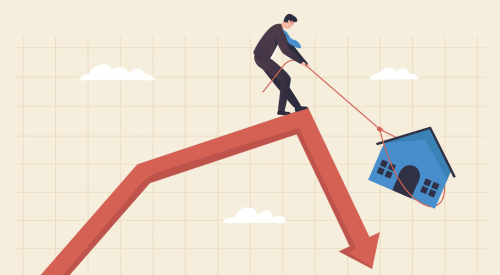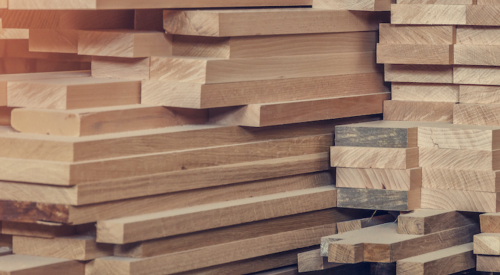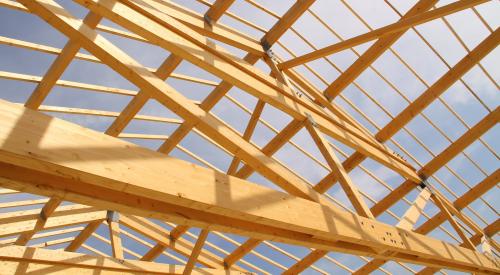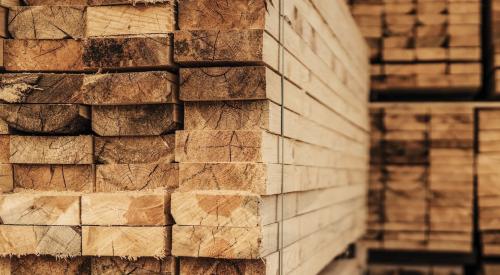Strong buyer demand pushed builder confidence up in April even as builders continued to grapple with rising lumber prices and supply chain issues and consumers faced higher home prices due to a lack of inventory.
Derived from a monthly survey that NAHB has been conducting for 35 years, the NAHB/Wells Fargo Housing Market Index (HMI) gauges builder perceptions of current single-family home sales and sales expectations for the next six months as “good,” “fair,” or “poor.” The survey also asks builders to rate traffic of prospective buyers as “high to very high,” “average,” or “low to very low.” Scores for each component are then used to calculate a seasonally adjusted index where any number over 50 indicates that more builders view conditions as good than poor.
Overall builder confidence in the market for newly built single-family homes rose one point to 83 in April. The HMI subindex gauging current sales conditions increased one point to 88 and the gauge charting traffic of prospective buyers posted a three-point gain to 75. The component measuring sales expectations in the next six months fell two points, but remains high, at 81. These markers indicate that builders expect the year ahead to be strong for their businesses.
Home buyer survey results show a similar trend of optimism and opportunity. According to NAHB’s Housing Trends Report, in the first quarter of 2021, 16% of adults were planning a home purchase in the next 12 months. Among that group of prospective buyers, 42% were looking to buy a newly built home and 30% an existing home, compared to only 24% of buyers reporting a preference for new homes and 40% preferring an existing home a year earlier.
These changes provide evidence that a growing number of buyers are looking specifically at new home construction from the onset of their home search, a boon for home builders.

However, despite strong buyer demand for new homes – which rebounded in April from a slight dip at the beginning of the year – builders continue to face challenges to add much needed housing supply to the market. The supply chain for residential construction is tight, particularly regarding the cost and availability of lumber, appliances and other building materials.
According to NAHB’s latest estimates, rising softwood lumber prices over the last 12 months have added $35,872 to the price of an average new single-family home, and $12,966 to the market value of an average new multifamily home. That increase in multifamily value translates to households paying $119 a month more to rent a new apartment.
For the prices reported by Random Lengths in mid-April 2020, the total cost to a builder for all lumber and manufactured products in an average single-family home was $16,927, and $5,940 for the products in an average multifamily home. Now, based on Random Lengths prices reported in late-April 2021, the fully phased-in costs have risen to $48,136 for the softwood lumber products in an average single-family home, and $17,220 for the products in an average multifamily home. These estimates represent a 184% and 190% increase in single-family and multifamily builders’ lumber costs, respectively, over the course of the past year.
The cost to home buyers has gone up somewhat more than the cost to builders, due to factors such as interest on construction loans, brokers’ fees, and margins required to attract capital and get construction loans underwritten. For items like lumber that are purchased and used throughout the construction process, NAHB estimates that the final price will increase by 14.94% above builder cost. Additionally, mortgage rates have trended higher since February and home prices continue to outstrip inflation, adding to housing costs absorbed by the consumer.
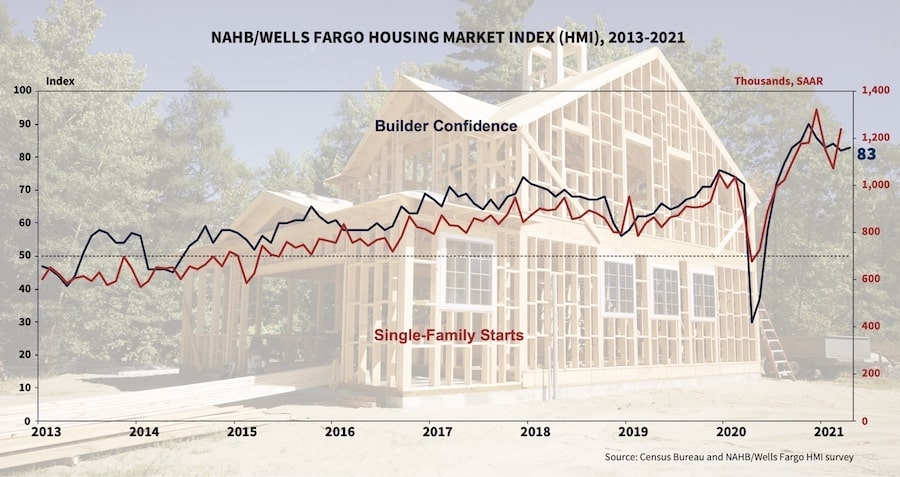
All of these factors considered, more prospective home buyers (33%) expect that finding the right home will get easier in the months ahead compared to a year earlier (25%). A majority of buyers (61%), however, still expect the house search will become harder or stay about the same in the near future, essentially unchanged from a year earlier (62%). The improvement in some buyers’ perceptions about the availability of homes reflects the fact that more new and existing homes were sold in the first quarter of 2021 than in the same period in 2020.
This hope for improved buying conditions, combined with growing demand and more money spent on housing, could boost the national economy. Thanks to a surge in residential investment during 2020, housing’s share of GDP expanded and remains near historic levels. For the first quarter of 2021, overall GDP growth saw recovery at a strong 6.4% seasonally adjusted annual rate. Residential fixed investment in home building and remodeling expanded at a 10.8% annualized rate, after a nearly 33% rate of growth for the last quarter of 2020. All of this growth translated to housing making up 17.6% of the national GDP, nearly a 14-year high.
NAHB forecasts ongoing growth in single-family construction in 2021, albeit at a lower growth rate than realized in 2020. Further, home construction will continue to expand as the consequences of the virus crisis are likely to lead to a reversal for declining home size trends with a greater need for additional home office space due to more working from home. If and when lumber prices begin to cool and the supply chain is once again functioning normally, the housing industry is in a strong position to benefit builder businesses and prospective home buyers alike.

